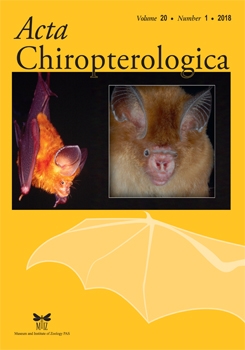This study characterizes the patterns of bat fly parasitism on Cynopterus brachyotis, the most common fruit bat in the tropical urban environment of Singapore. Mist netting was conducted over a period of five months in two secondary forest sites, where 211 unique individuals were captured and examined for ectoparasites. The relative density, prevalence and mean intensity of parasitism by the wingless nycteriibid Leptocyclopodia ferrarii ferrarii were compared with respect to sex, age and reproductive status of captured bats. The overall prevalence of parasitism was 40.3% and analyses revealed no significant differences in the three parameters when comparisons were made between demographic subgroups. However, adults, females and pregnant females had a higher prevalence of infestation, while juveniles, males and non-pregnant females had higher mean intensity of bat flies. Roosting behavior is likely to be the driving factor for parasite transmission, as bat flies are more likely to encounter females because of C. brachyotis' harembased social structure. No correlation was found between bat body condition and parasite load, even when the relationship was examined for juveniles and adults separately. The observation of a re-infestation within 46 days suggests that there is high intraindividual and intra-roost parasite transmission. Research into roost group size, distribution, site fidelity, and connectivity is needed to better understand the patterns and dynamics of parasitism on bats living in the urban environment.
How to translate text using browser tools
1 June 2018
Parasitism by Bat Flies on an Urban Population of Cynopterus brachyotis in Singapore
Vivien Naomi Lee,
Ian H. Mendenhall,
Benjamin P. Y.-H. Lee,
Mary Rose C. Posa
ACCESS THE FULL ARTICLE

Acta Chiropterologica
Vol. 20 • No. 1
June 2018
Vol. 20 • No. 1
June 2018
Chiroptera
ectoparasite
host-parasite systems
Nycteribiidae
Southeast Asia
tropics




